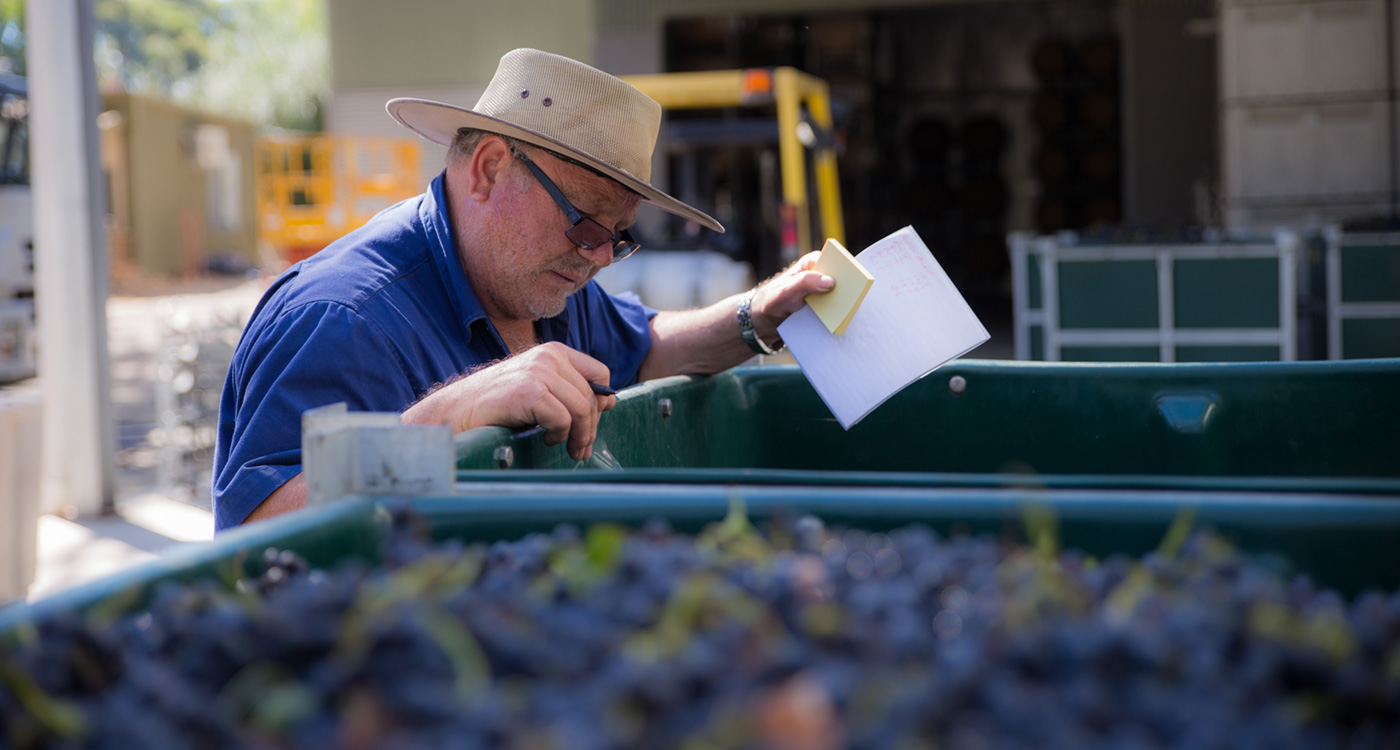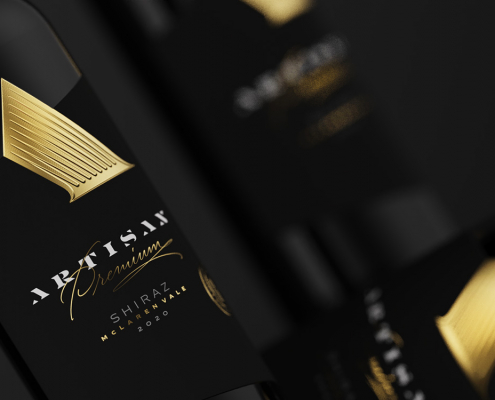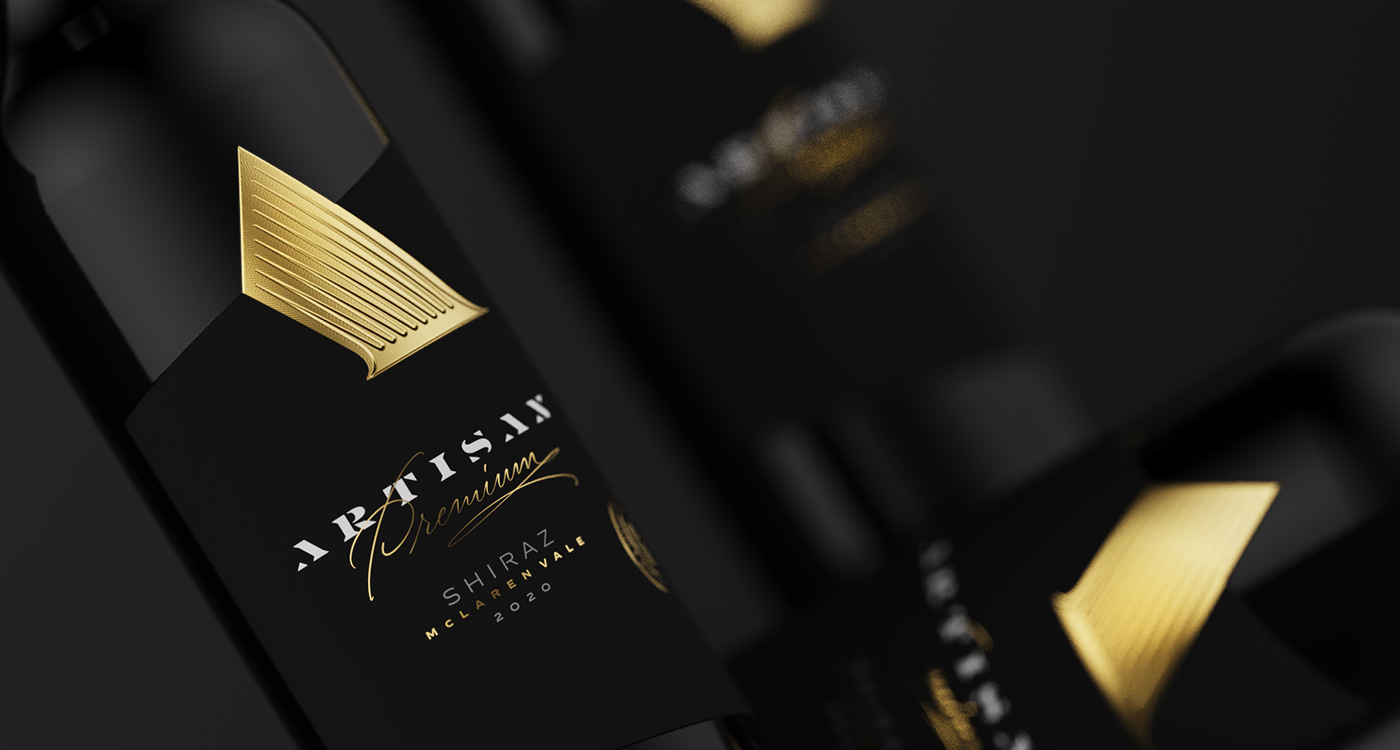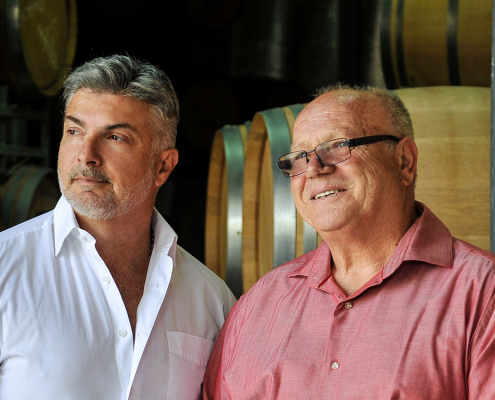WINEMAKING
The perfect balance of flavor and natural sweetness.
The quality of the grapes determines the quality of the wine more than any other factor. Grape quality is affected by weather during the growing season and the soil type, the combination of which is often referred to as the grape terroir. The time of harvest determines the sugar and flavour in the grapes.
Our winemaker carefully selects the exact time the grapes must be harvested, looking for the perfect balance of flavour and natural sweetness. Our premium grapes are harvested by hand, each bunch sent to the winery whole, and once crushed, are fermented in small six tonne open fermenters, compared to the large 20 and 30 tonne fermenters used in more commercial wineries. Smaller fermenters offer more control and better extraction.
The caps are plunged daily, and pump overs are timed to keep the caps wet. Ferments can take up to 12 days or longer, releasing colour and tannins from the skins. During the primary fermentation, the yeast cells feed on the sugars in the juice and multiply, producing carbon dioxide gas and alcohol. The temperature during fermentation affects both the taste of the end product, as well as the speed of fermentation. For red wines, the temperature is typically 22 to 25°C. As the fermenter heats up we will control the temperature to stabilise the ferment.
Working with smaller batches and longer ferments is time consuming and costlier, but the individual attention produces better results. Our primary focus is on premium wine and we are not going to rush that, so we let nature do its thing with a little help from us.
Once the wine and skins are pressed secondary fermentation will continue in a selection of customised French and American Oak barrels. Each parcel and grower is kept separate until the winemaker decides the oak has done its job. Oak can vary the colour, flavour and tannin profile, and the texture of the wine. A small amount of oxygen also penetrates the oak and helps with maturation. American Oak adds coconut and vanilla notes while French Oak adds cedar and clove spice. Higher toasting levels will also give the wine flavours reminiscent of mocha or coffee.
Only then the masterful process of blending begins, where the wine is graded by the winemaker.







